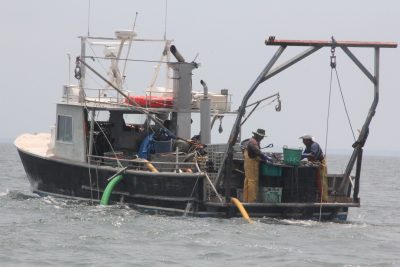
Sea Grant programs throughout the North Atlantic region have pursued a number of strategies to help shellfish growers overcome the challenges that COVID-19 has brought to the shellfish aquaculture industry. The impacts have been felt both by the growers of market-sized shellfish as well as the hatcheries they rely on for seed stock.
Sea Grant’s rapid response programs can generally be divided into three categories can generally be divided into three categories: alternative market development, restoration buyouts programs, and assistance with accessing direct cash relief. While restoration programs were largely directed to oysters in most states, other types of shellfish (i.e. mussels, clams) were included in alternative market development and cash relief programs as well as in a select few restoration projects.
Learn more about the various ways Sea Grant programs have responded in these two documents:
- A summary of Sea Grant responses to shellfish aquaculture during COVID-19 can be found here.
- A more comprehensive description of the responses can be found here.